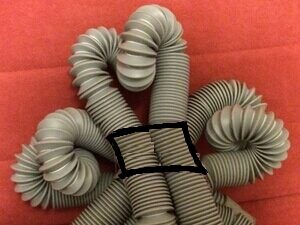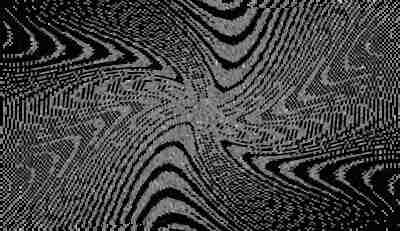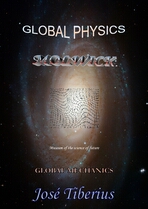3.b.2.a) Strong and weak nuclear force
In the previous section, we described the process of formation of stable atomic particles, as well as the physical causes that justify their stability and the extremely similar size of the nucleons, protons, and neutrons.
This description included the different forces that are at play, which helps us to understand the nature of nuclear forces.
Before getting into analyzing the nuclear force, it is worth pointing out that the model in Global Mechanics is different from the better-known model in Quantum Mechanics, that of Quantum Chromodynamics (QCD). This non-academic approach does not mean that the calculations of Quantum Chromodynamics are erroneous or do not correspond to reality, but what is indeed incorrect is the interpretation of the underlying physical causes. Something similar occurs with the Theory of Relativity when it stretches time or expands space.
Quantum Chromodynamics (QCD) is a generalization of Quantum Electrodynamics (QED) as it has a similar mathematical structure but, instead of an electric charge, it has three-color charges and, instead of a photon, it has eight gluons.
Furthermore, there is a lattice perturbation theory ** within Quantum Chromodynamics.
In any case, the perspectives of Global Mechanics (GM) and Quantum Chromodynamics (QCD) are entirely different. We hope they can complement each other, where one renormalizes some ideas, and the other renormalizes the mathematics.
One aspect that creates much confusion is the terminology used by Quantum Mechanics for the elementary particles that intervene in the nuclear force; indeed, one has to acknowledge the effort needed to categorize the unknown. Sometimes, we get the impression that it is somewhat like describing drops of water that fall into a pond full of frogs and toads of different species and ages.
In the page of this book on the main elementary particles of the Standard Model, there is a brief reference to the relationships between these elementary particles and the types of fundamental particles according to Global Mechanics.
The global characteristics of the nuclear force are:
Strong nuclear force
According to Quantum Chromodynamics (QCD), both the strong nuclear force and the weak nuclear force operate in the interior of protons or neutrons, while the nuclear force that is responsible for maintaining the nucleus of the atom bound is the residual strong nuclear force. This terminology has historical reasons given that, according to Wikipedia, the force that kept the atomic nucleus bound together was initially the strong nuclear force.
Global Mechanics unifies the support of the strong force with that of the electromagnetic force; therefore, Global Physics –which Global Mechanics forms part of– could be a Grand Unified Theory (GUT). Global Physics could also be a theory of everything (TOE), as it unifies the strong nuclear interaction and the electroweak interaction with the gravitational interaction through the interaction of mass.
The mass of protons and neutrons is made up of curls of the reticular structure of matter, or Global Aether, due to the accumulation of electromagnetic force.
As described in the previous section, protons or neutrons contain three quarks in the interior of a reticule. To be more precise, they keep together due to the filaments of a specific reticule. Besides curls, or strictly speaking, quarks, there will also be torsions of Global Aether –the strong field– inside the reticule and nearby reticules. In fact, it seems that most of the mass of the nucleons corresponds to the filamentous matter of the strong field.
Strong nuclear force External and internal force balance 
The heyelogic figure of a more or less static strong field is a simplification to offer an intuitive idea, but one should not forget that Global Aether has an unbreakable three-dimensional reticular structure.
The main idea is that the strong nuclear force ** means two opposing forces in equilibrium, the strong internal force, and the strong external force.
The elasticity of the filaments of the three-dimensional reticule configures the strong external force, as they are responsible for both quarks and the entire strong field not coming apart due to the reversion of their elastic energy of deformation. This description is somewhat similar to the process of confinement in Quantum Chromodynamics (QCD).
The strong internal force will be the tendency of the curls of Global Aether to come undone due to the accumulated elastic energy of deformation.
There is an exciting expression from Wikipedia when discussing gluons and the strong color force in Quantum Chromodynamics (QCD), “… the gluons that bond the quarks create a field of color in the shape of a cord which, with enormous force, prevents the quarks from separating…”. The force of the cord is so immense that, by Global Mechanics (GM), it is unbreakable, as it deals with the filaments of a reticule of Global Aether.
Likewise, the balance of the strong force, which creates nucleons, makes the mass very stable by mutually blocking the internal curls, as if it were a knot in which the harder the ends are pulled, the stronger it gets.
Weak nuclear force
The positive charge of protons or the neutral charge of neutrons is a consequence of the need for internal equilibrium in the electromagnetic tension between different quarks.
According to previous sections, the formation of an electron in orbit involves reaching a physical limit concerning the curls of the mass by the energy of electromagnetic torsion allowed by Global Aether. The three quarks of the nucleons indicate three sources of different electrical charge, and they could respond to another physical limit of torsion in the strong field. However, since this field will connect to the exterior electromagnetic field, eventually, the imposed limit, in any case, would be the limit of the formation of a mass of the electromagnetic torsion.
Strong and weak nuclear force AI Bing Image 
The total charge of the proton cannot exceed that of the electron due to the need above for internal equilibrium in the electromagnetic tension.
In any case, they are only some farfetched ideas.
We have the unfounded suspicion that the charge of the proton and the neutron changes, or at least can change with speed, and that the electrons cancel out the more positive charge of the atomic nucleus the faster they move in their orbits.
The accumulated elastic energy will neutralize between the different quarks due to their spatial confinement within the reticule. If the strong force implies a balance between internal forces and the external force of the reticular filaments, the weak nuclear force represents a balance between the interior forces of the different quarks.
The weak interaction, or weak force, refers to the changes in the internal configuration of protons and neutrons. The more well-known is the beta decay (β decay) and radioactivity. Beta decay is the transformation of a neutron into a proton using the emission of a W boson, which breaks down (decays) almost immediately into a high-energy electron and an antineutrino. More detail on the weak interaction is on Wikipedia.
Consequently, the weak interaction or weak force is a result of the need for equilibrium in what we have called the internal strong field, in an attempt to maintain similar terminology, to a certain extent, to that of Quantum Chromodynamics (QCD). Similarly, the electrons of the atom are a consequence of the gravito-magnetic field generated between the nucleus and space outside the atom.
The neutron should contain a balance of forces of torsion that annuls its total charge; therefore, the three quarks should not have the same nature as their curls.
In special cases, such as those of nuclear interaction, one could speak of strong waves and weak waves not to confuse them with electromagnetic waves.
The electroweak model in Quantum Mechanics unifies the weak nuclear force with the electromagnetic force since at very high energies they behave in the same way. Therefore, it is in a Grand Unification Theory (GUT).
This electroweak unification is not surprising if, as has been mentioned, the weak nuclear force relaxes with the internal equilibrium in the electromagnetic tension between the different quarks.
Global Mechanics (GM) shares this statement; however, the unification with the strong nuclear force conceptually refers to Global Aether supporting it. The mechanism of retaining by the filaments in the strong force is not the same as that of the elastic energy of torsion, although it will quantitatively produce the necessary balance.
-
Residual strong force
This nuclear force is responsible for the nucleus of the atom remaining bound despite the hypothetical repulsive electromagnetic forces between the protons.
I say hypothetical because the residual strong field distorts the effect of the electromagnetic field, just as the electromagnetic field distorts the gravitational force for the particles that interact with the electric charge.
The residual strong force is a consequence of the residual strong field created around the protons and neutrons due to the effect of retention on the three-dimensional structure of Global Aether.
Modern Physics tells us that this force vanishes beyond 10-15 m, that is, the size of the atomic nucleus.
The heyelogic image shows how the residual strong force could act, that is, fitting in zones of strong tension with others of lower tension between nucleons.
Theory of the atom Residual strong force 
The residual strong force acts only at very short distances because the strong field quickly stops existing with distance, due to the enormous energy necessary to maintain it, which is only possible thanks to the resistance that the filaments of a reticule have to stretch.
Furthermore, there are special effects that could occur at short distances, such as the one explained in the section corresponding to the gravitational force of this book. The external strong nuclear force will be more like a type of gravitation than like electromagnetism, as it depends on the longitudinal tension of the filaments of a reticule.
